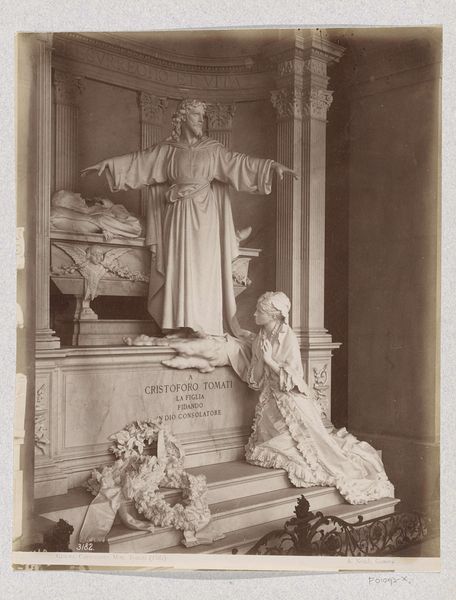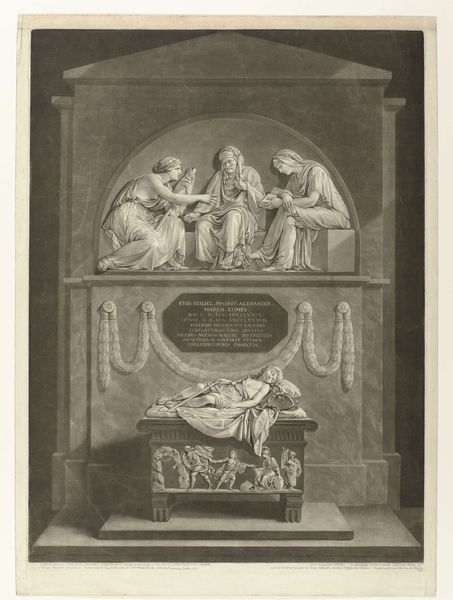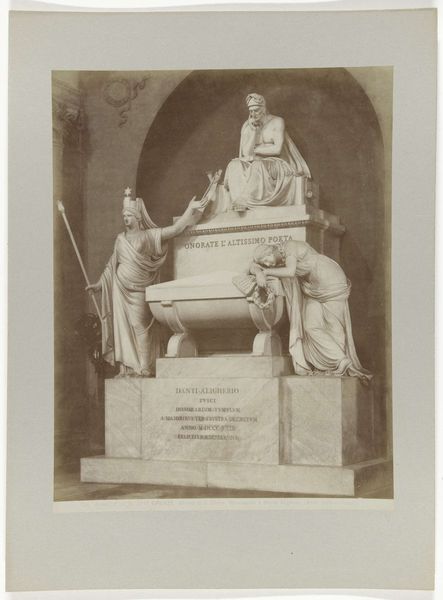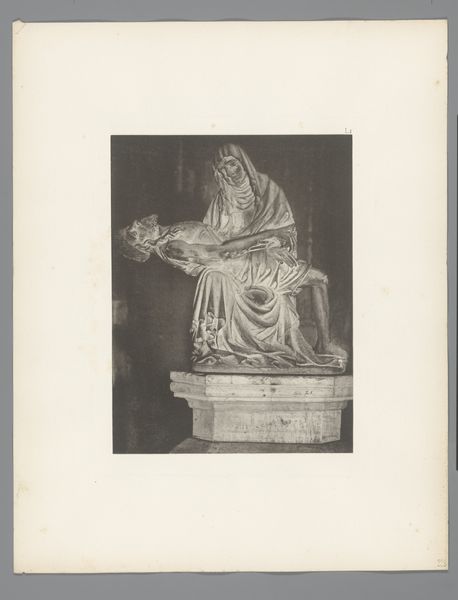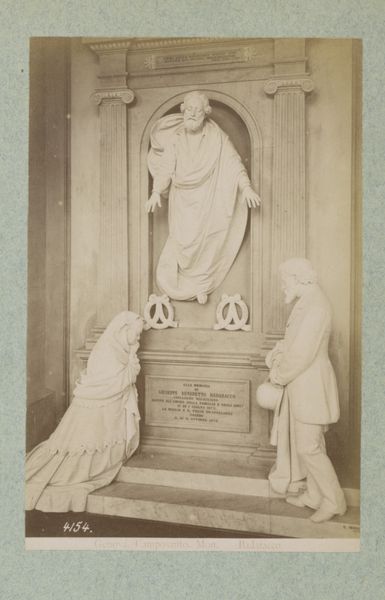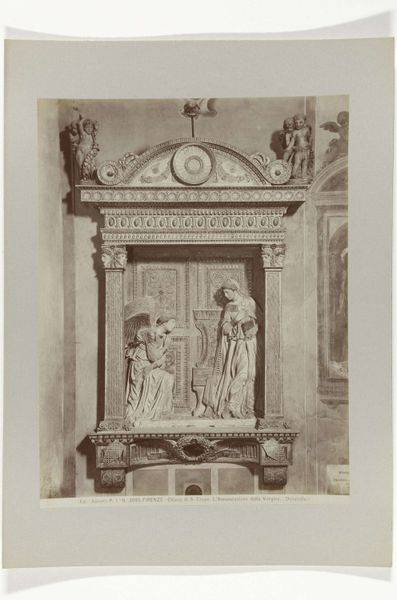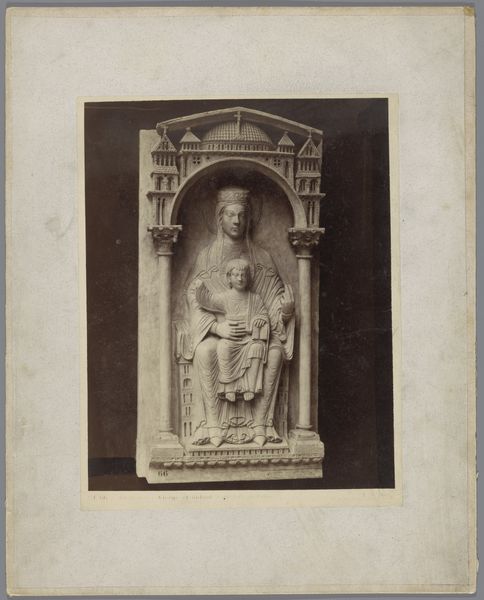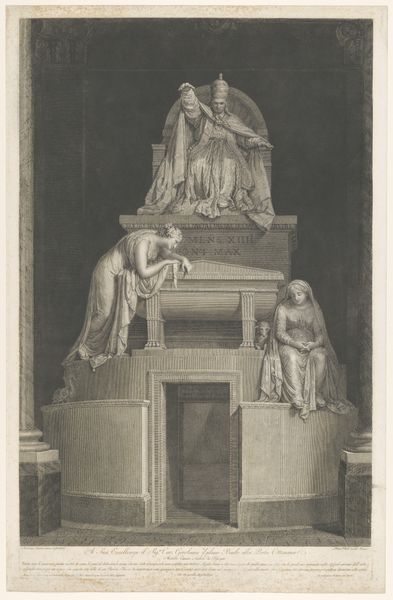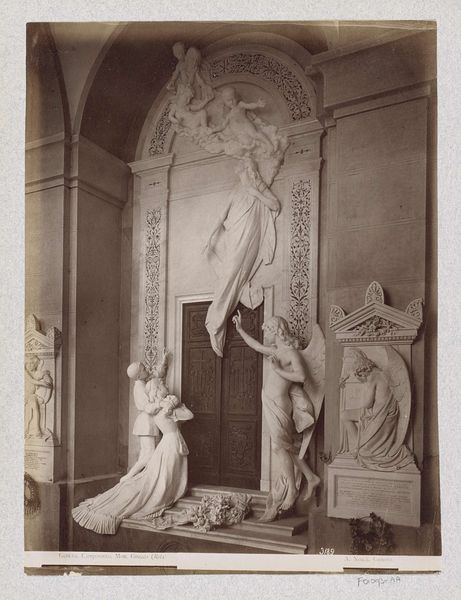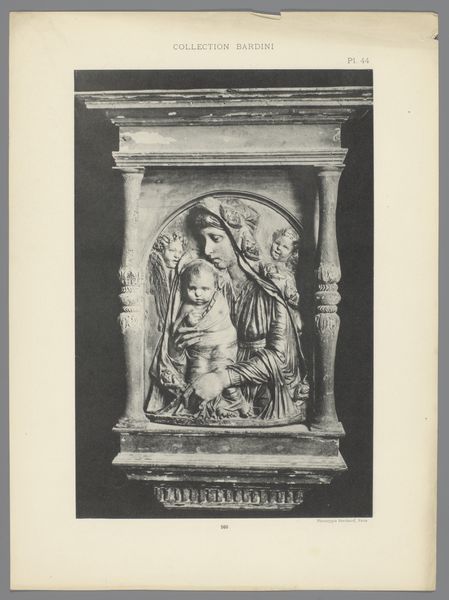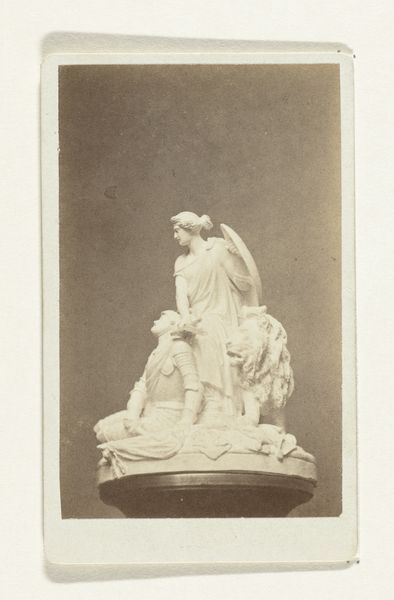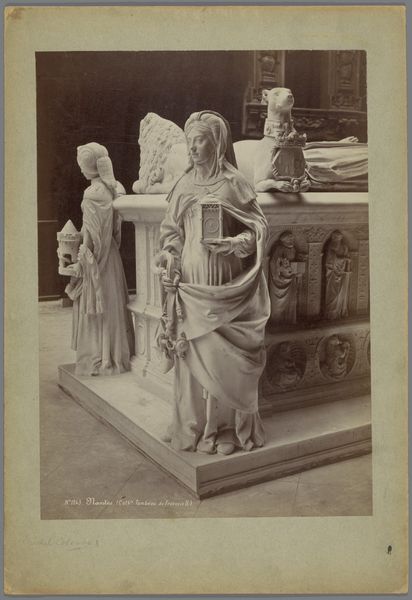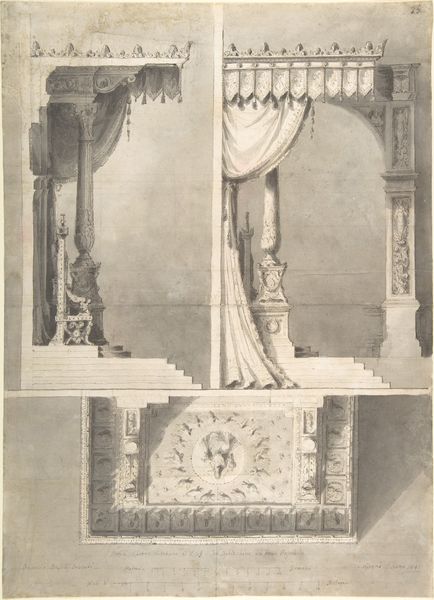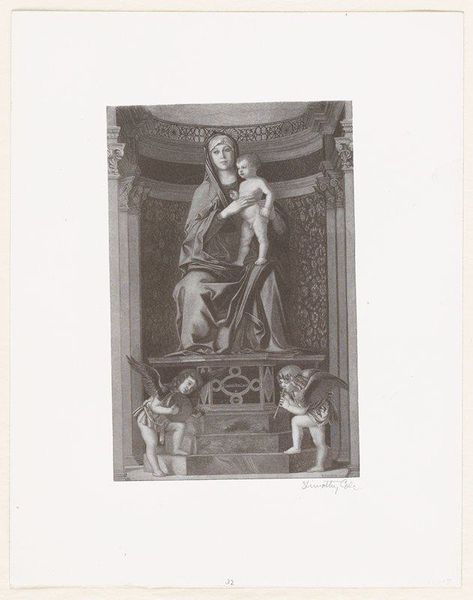
photography, sculpture, gelatin-silver-print
#
portrait
#
neoclassicism
#
photography
#
sculpture
#
gelatin-silver-print
#
history-painting
Dimensions: height 260 mm, width 207 mm, height 277 mm, width 367 mm
Copyright: Rijks Museum: Open Domain
Curator: We’re looking at a photograph, a gelatin-silver print dating from around 1875, of a grave monument located in the Camposanto in Genoa, Italy. The photographer is Alfredo Noack. Editor: It looks...melancholy. All soft grays and gentle light. The way the figures are arranged—it's like a silent play unfolding, very poignant. Curator: The Camposanto itself is incredibly significant. Constructed in the mid-19th century, it served not just as a cemetery but as a grand showcase of funerary art, reflecting the social status and aesthetic tastes of the Genoese elite. Consider the rise of bourgeois society at the time and their preoccupation with memorialization and legacy. Editor: You’re right, there’s a deliberate theatricality. The monument is like a stage, and we are viewing sculpted players. A robed, grieving woman…a man, averted and sorrowful, with something clutched in his hand…what is that, a little purse? What stories could they tell, frozen in stone? Curator: The sculpture adheres to Neoclassical principles. We see that clear emphasis on balanced composition, restrained emotion, and references to classical forms—evident in the drapery and the architectural framework surrounding the figures. It signals a desire to align with the perceived virtue and order of antiquity, further solidifying the deceased's respectability within the burgeoning bourgeois ideology. Editor: It’s interesting how the photo adds another layer of removal, doesn't it? A sculpture representing grief, photographed in shades of sepia…like grief filtered through time, rendered even more distant and dreamlike. Do you think the choice of the medium has more to do with documentation or expression? Curator: Given Noack's commercial practice and the period's photographic conventions, documentation was undoubtedly a primary concern, but the artistry in capturing the play of light and shadow imbues the image with a powerful expressive quality nonetheless. The photographer chose a specific time of day to achieve that interplay of light and shadow to maximize the expressive quality. Editor: I like to imagine that these sculptures continue their drama, whispering in the shadows of the Camposanto. Maybe someone added fresh flowers or offerings. Curator: Precisely. And perhaps thinking through our interpretation helps reanimate them in our time. Editor: Agreed, it gives me a greater respect for their stories and griefs.
Comments
No comments
Be the first to comment and join the conversation on the ultimate creative platform.
